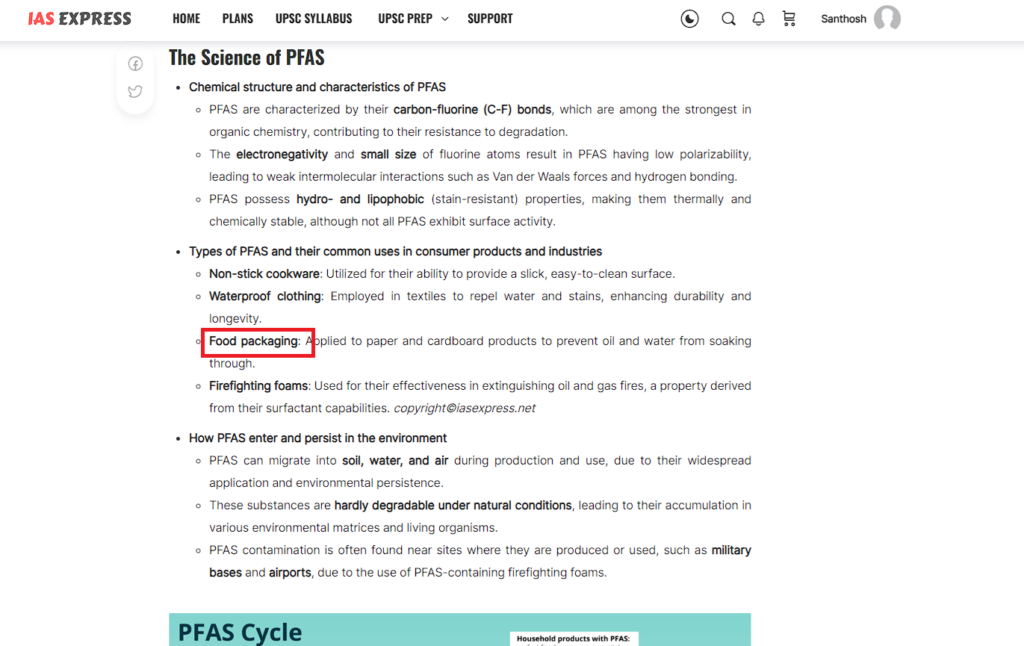With reference to perfluoroalkyl and polyfluoroalkyl substances (PFAS) that are used in making many consumer products, consider the following statements:
- PFAS are found to be widespread in drinking water, food and food packaging materials.
- PFAS are not easily degraded in the environment.
- Persistent exposure to PFAS can lead to bioaccumulation in animal bodies.
Which of the statements given above are correct?
(a) 1 and 2 only
(b) 2 and 3 only
(c) 1 and 3 only
(d) 1, 2 and 3
Correct Answer: (d) 1, 2 and 3
Explanation:
- Statement 1: PFAS are found to be widespread in drinking water, food, and food packaging materials.
- Statement 2: PFAS are not easily degraded in the environment.
- Statement 3: Persistent exposure to PFAS can lead to bioaccumulation in animal bodies.
Learn more
- Definition and Uses:
- PFAS (Per- and polyfluoroalkyl substances) are a large group of synthetic chemicals used since the 1940s in various industrial and consumer products for their water, grease, and stain-resistant properties.
- Common applications include non-stick cookware, water-repellent clothing, stain-resistant fabrics, firefighting foams, and food packaging materials.
- Environmental Persistence:
- PFAS are highly persistent in the environment due to the strong carbon-fluorine bonds, which do not break down easily. This persistence leads to long-term environmental contamination.
- Routes of Exposure:
- Humans can be exposed to PFAS through multiple routes, including drinking contaminated water, consuming food packaged in PFAS-containing materials, inhaling dust, and using consumer products that contain PFAS.
- Health Risks:
- Exposure to certain PFAS has been linked to various health issues, including cancer, hormone disruption, liver and kidney toxicity, immune system harm, and reproductive and developmental toxicity.
- Bioaccumulation:
- PFAS can accumulate in the bodies of humans and animals over time. This bioaccumulation is concerning because it can lead to higher concentrations of these chemicals in the body, potentially causing adverse health effects.
- Regulatory Actions:
- Various regulatory bodies and governments are taking steps to limit the use of PFAS. Some states and countries have banned or restricted the use of PFAS in certain products, and there are ongoing efforts to find safer alternatives.
- Research and Monitoring:
- Ongoing research aims to better understand the environmental and health impacts of PFAS, develop methods to detect and measure PFAS in various media, and find effective ways to remove PFAS from contaminated environments.
- Alternatives:
- Alternatives to PFAS-containing products are being developed and are available in the market. These alternatives aim to provide similar benefits without the associated environmental and health risks.
Reflection in IAS EXPRESS


[collapse]

